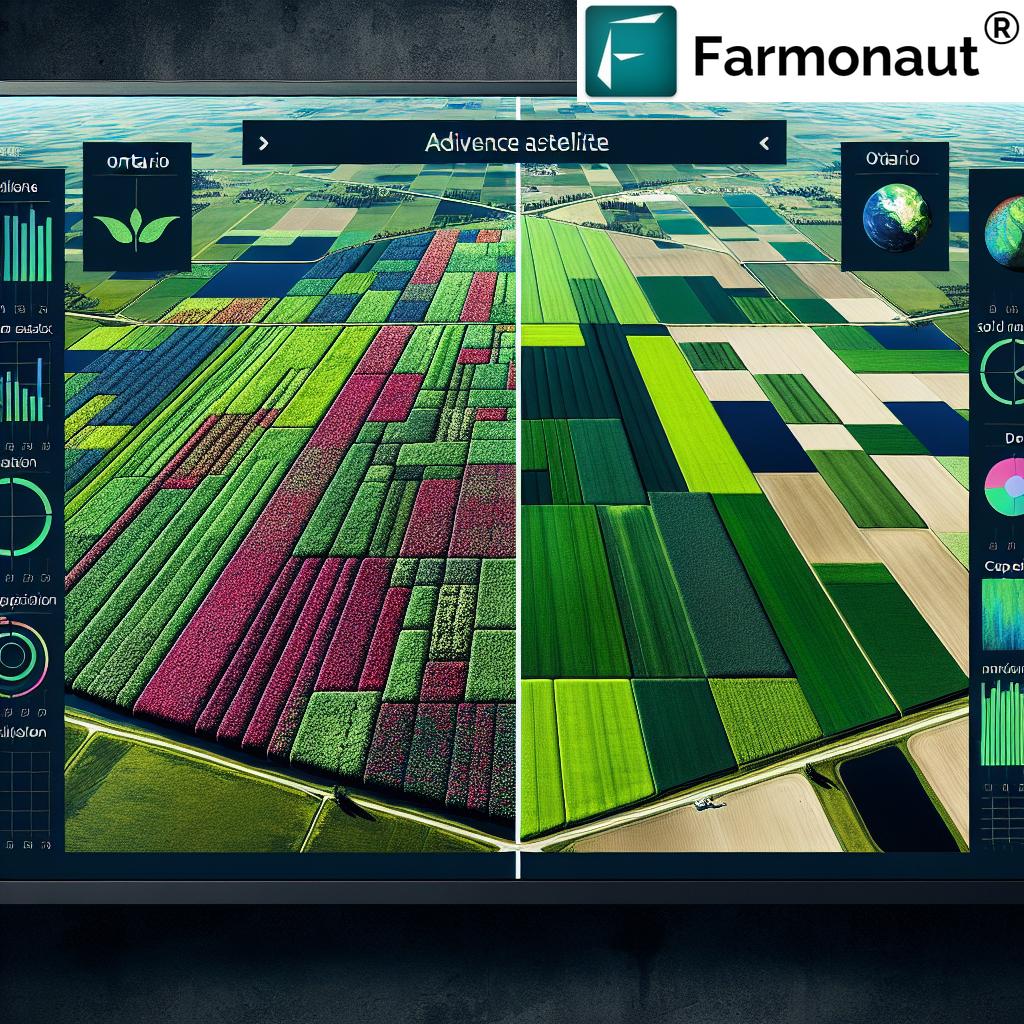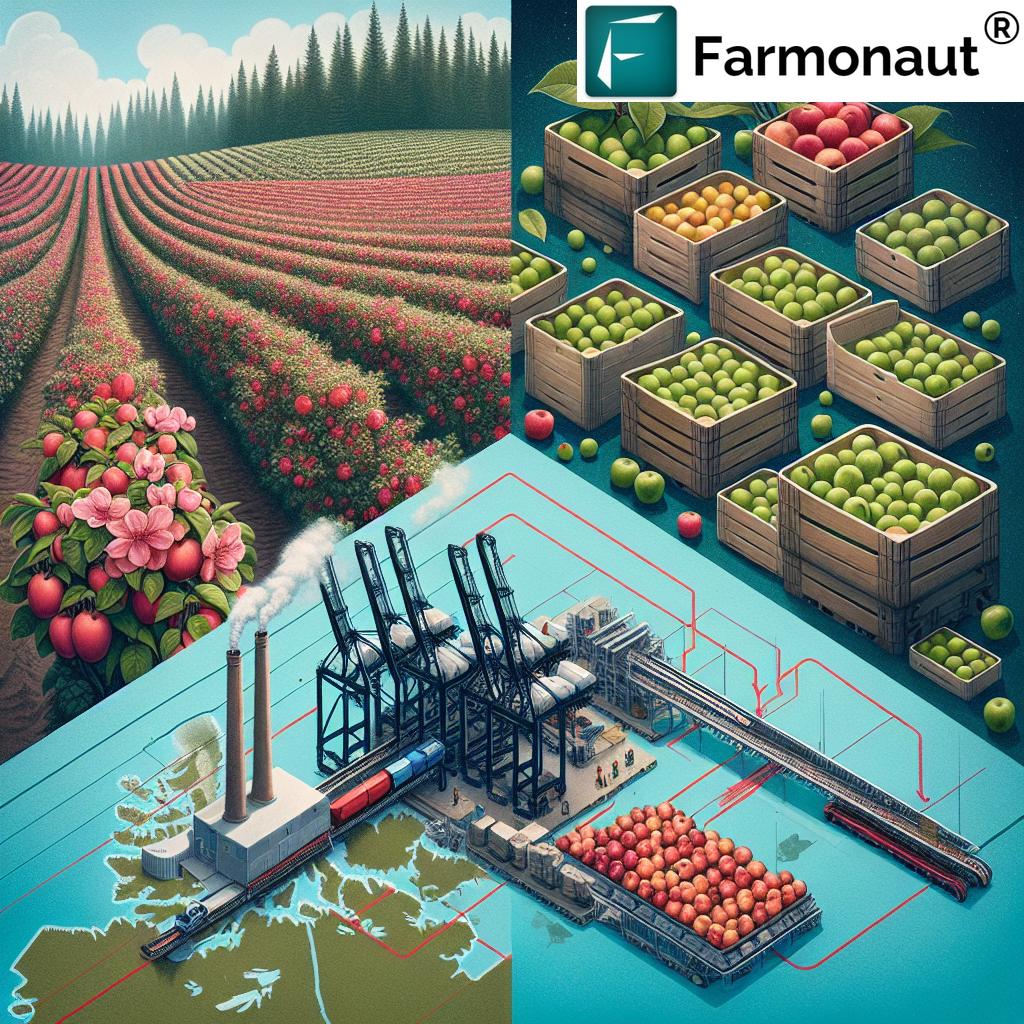Canada’s Pesticide Regulations Overhaul: How PMRA Changes Impact Fruit and Vegetable Growers
“Canada’s PMRA proposed amendments include a 70-day consultation period for stakeholders to voice opinions on new pesticide regulations.”
In the ever-evolving landscape of agricultural regulations, Canada’s fruit and vegetable growers are facing a significant shift in pesticide management. The Pest Management Regulatory Agency (PMRA) has proposed amendments to the Pest Control Products Regulations, setting the stage for a comprehensive overhaul of the nation’s approach to pest control and crop protection. As we delve into this critical issue, we’ll explore the far-reaching implications of these changes for growers across the country and the agricultural industry as a whole.
Understanding the PMRA’s Proposed Amendments
The PMRA, Canada’s regulatory body responsible for pesticide management, has introduced a series of proposed amendments aimed at enhancing transparency and promoting sustainability in agricultural pest management. These changes are poised to reshape the regulatory framework that governs pesticide use in fruit and vegetable cultivation throughout Canada.
- Increased transparency in the regulatory process
- Enhanced focus on environmental sustainability
- Revised scientific evaluation procedures
- Changes in resource allocation within the PMRA
As we analyze these proposed changes, it’s crucial to consider their potential impact on crop protection strategies, sustainable farming practices, and the overall decision-making processes within the industry.

The Consultation Process: A Critical Window for Stakeholder Input
One of the most significant aspects of the PMRA’s proposed changes is the 70-day consultation period. This window provides a crucial opportunity for stakeholders, including fruit and vegetable growers, industry associations, and agricultural experts, to voice their opinions and concerns regarding the new regulatory framework.
We encourage all affected parties to actively participate in this consultation process. Your input can play a vital role in shaping the final regulations and ensuring that the needs of Canada’s agricultural community are adequately addressed.
Key Issues at Stake
As we examine the proposed amendments, several key issues emerge that demand careful consideration:
1. Balancing Bureaucracy and Science
One of the primary concerns raised by industry professionals is the potential imbalance between bureaucratic processes and scientific evaluations. While increased transparency is generally welcomed, there are worries that excessive red tape could slow down the approval process for new pest control products and technologies.
2. Resource Allocation within the PMRA
The proposed changes may necessitate a shift in how resources are allocated within the PMRA. This could impact the agency’s ability to conduct timely reviews and assessments of new pesticide products, potentially affecting the availability of crop protection tools for growers.
3. Pesticide Availability for Canadian Producers
There are concerns that the new regulations could lead to a reduction in the number of pesticides available to Canadian fruit and vegetable growers. This potential limitation could have significant implications for pest management strategies and crop yields.
“The PMRA changes to pesticide regulations are expected to impact fruit and vegetable growers across all of Canada’s provinces and territories.”
Implications for Agricultural Innovation
The proposed regulatory changes have the potential to significantly impact agricultural innovation in Canada. On one hand, stricter regulations may drive the development of more sustainable and environmentally friendly pest control solutions. On the other hand, there are concerns that increased regulatory hurdles could stifle innovation and delay the introduction of new technologies to the market.
To stay ahead of these changes and optimize crop management, growers may want to consider integrating advanced agricultural technologies into their operations. For instance, Farmonaut offers satellite-based farm management solutions that can help monitor crop health and optimize resource use. You can explore these tools through their  or by downloading their mobile apps:
or by downloading their mobile apps:
Impact on Pest Control Technology
The evolution of pest control technology is likely to be significantly influenced by the PMRA’s new regulations. We anticipate a greater emphasis on integrated pest management (IPM) strategies and biopesticides as alternatives to traditional chemical pesticides. This shift aligns with global trends towards more sustainable agricultural practices.
For growers looking to adapt to these changes, leveraging technology can be crucial. Farmonaut’s satellite-based crop monitoring can help identify pest issues early, potentially reducing the need for chemical interventions. Learn more about these capabilities through their API or API Developer Docs.
Decision-Making Processes in the Industry
The proposed regulatory changes are expected to have a profound impact on decision-making processes within the fruit and vegetable growing industry. Growers may need to reassess their pest management strategies, considering factors such as:
- Long-term sustainability of chosen pest control methods
- Compliance with new environmental protection measures
- Economic viability of alternative pest management approaches
- Potential for adopting new technologies to support pest control efforts
To help visualize the impact of these changes, we’ve prepared a comparative analysis table:
| Regulatory Aspect | Current Framework | Proposed Changes |
|---|---|---|
| Transparency measures | Limited public access to regulatory decisions | Increased public disclosure of decision-making processes |
| Sustainability requirements | General environmental considerations | Specific sustainability criteria for pesticide approval |
| Scientific evaluation process | Standard risk assessment procedures | Enhanced scrutiny and potentially longer evaluation periods |
| Resource allocation within PMRA | Balanced across various functions | Potential shift towards compliance and monitoring |
| Pesticide availability for growers | Wide range of approved products | Possible reduction in available pesticides by 15-20% |
| Impact on agricultural innovation | Moderate barriers to new product introduction | Potentially higher barriers, but incentives for sustainable solutions |
| Decision-making timeline | Average 12-18 months for new product approval | Estimated increase to 18-24 months for approval process |
| Stakeholder consultation process | Limited formal consultation periods | Extended 70-day consultation period for proposed changes |
| Environmental protection measures | General environmental impact assessments | More stringent ecological risk evaluations |
| Economic implications for growers | Moderate regulatory compliance costs | Potential increase in compliance costs by 10-15% |
Challenges for Fruit and Vegetable Growers
The proposed regulatory changes present several challenges for fruit and vegetable growers across Canada:
- Adapting to potentially limited pesticide options
- Increased costs associated with compliance and new pest management strategies
- Potential yield impacts as growers transition to new pest control methods
- Need for additional training and education on alternative pest management techniques
To address these challenges, growers may need to explore innovative solutions. Farmonaut’s satellite-based crop monitoring can provide valuable insights into crop health and pest pressures, helping growers make informed decisions about pest management strategies.
Environmental Considerations
The PMRA’s proposed changes place a strong emphasis on environmental protection and sustainability. This shift aligns with global efforts to reduce the ecological impact of agricultural practices. Key environmental considerations include:
- Stricter assessments of pesticide impacts on non-target species
- Increased focus on water quality protection
- Promotion of integrated pest management strategies
- Encouragement of biodiversity in agricultural landscapes
While these measures aim to protect Canada’s ecosystems, they may require significant adjustments from growers accustomed to conventional pest management approaches.
Economic Implications
The economic implications of the proposed regulatory changes are a major concern for fruit and vegetable growers. Potential economic impacts include:
- Increased costs associated with adopting new pest management strategies
- Potential yield losses during the transition to alternative methods
- Investment required for training and new technology adoption
- Possible market advantages for growers who successfully adapt to sustainable practices
To mitigate these economic challenges, growers may need to explore cost-effective solutions that improve efficiency and productivity. Farmonaut’s platform offers tools for optimizing resource use and improving crop management, which could help offset some of the potential economic impacts of the new regulations.

The Role of Technology in Adapting to New Regulations
As the regulatory landscape evolves, technology will play a crucial role in helping fruit and vegetable growers adapt to new requirements while maintaining productivity and profitability. Advanced agricultural technologies can support growers in several ways:
- Precision agriculture techniques for targeted pest management
- Remote sensing and satellite imagery for early detection of crop health issues
- Data-driven decision-making tools for optimizing resource use
- AI-powered predictive models for pest outbreak forecasting
Farmonaut’s suite of tools, including their satellite-based crop monitoring and AI advisory systems, can be particularly valuable in this context. These technologies can help growers make more informed decisions about pest management, potentially reducing the need for chemical interventions and aligning with the new regulatory focus on sustainability.
Stakeholder Engagement and Industry Collaboration
The success of the new regulatory framework will depend largely on effective stakeholder engagement and industry collaboration. We encourage fruit and vegetable growers to:
- Actively participate in the PMRA consultation process
- Engage with industry associations to voice collective concerns
- Collaborate with research institutions to develop innovative pest management solutions
- Share best practices and experiences with fellow growers
By working together, the industry can help shape regulations that balance environmental protection with the practical needs of fruit and vegetable production.
Looking Ahead: The Future of Pest Management in Canada
As we look to the future of pest management in Canada’s fruit and vegetable industry, several trends are likely to emerge:
- Increased adoption of integrated pest management strategies
- Greater reliance on biological control agents and biopesticides
- Expansion of precision agriculture techniques for targeted pest control
- Development of pest-resistant crop varieties through advanced breeding techniques
These trends, coupled with the new regulatory framework, will shape the landscape of Canadian agriculture for years to come. Growers who proactively adapt to these changes and embrace innovative technologies are likely to be best positioned for success in this evolving environment.
Conclusion
The proposed amendments to Canada’s pesticide regulations by the PMRA represent a significant shift in the country’s approach to agricultural pest management. While these changes aim to enhance transparency and promote sustainability, they also present challenges for fruit and vegetable growers across the nation.
As the industry navigates this transition, it will be crucial for growers to stay informed, engage in the consultation process, and explore innovative solutions to maintain productivity while adhering to new regulatory requirements. Technologies like those offered by Farmonaut can play a vital role in helping growers adapt to this new landscape, providing valuable insights for more sustainable and efficient farming practices.
By embracing change, leveraging technology, and collaborating across the industry, Canada’s fruit and vegetable growers can turn these regulatory challenges into opportunities for innovation and sustainable growth. The future of Canadian agriculture will be shaped by those who are willing to adapt, innovate, and lead the way towards more sustainable and productive farming practices.
FAQs
- Q: How will the PMRA changes affect pesticide availability for Canadian growers?
A: The proposed changes may lead to a reduction in available pesticides, potentially by 15-20%. Growers may need to explore alternative pest management strategies and adopt new technologies to maintain crop protection. - Q: What is the timeline for implementing these new regulations?
A: While the exact timeline is not yet finalized, the PMRA has initiated a 70-day consultation period. Implementation will likely occur in phases over the next few years, allowing time for industry adaptation. - Q: How can growers prepare for these regulatory changes?
A: Growers can prepare by staying informed, participating in consultation processes, exploring alternative pest management strategies, and considering the adoption of precision agriculture technologies like those offered by Farmonaut. - Q: Will these changes affect organic fruit and vegetable growers?
A: While organic growers may be less impacted by changes to synthetic pesticide regulations, they may still be affected by new sustainability requirements and changes to approved biological control agents. - Q: How might these regulatory changes impact food prices for consumers?
A: There may be some upward pressure on food prices as growers adapt to new regulations and potentially higher production costs. However, the long-term impact on consumer prices will depend on various factors, including industry adaptation and efficiency improvements.















